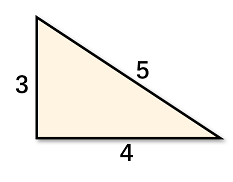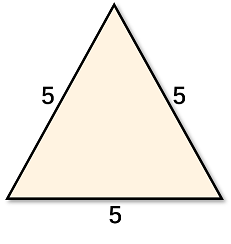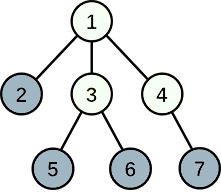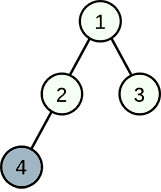Codeforces Round #635 (Div. 2) 题解
渭城朝雨浥轻尘,客舍青青柳色新。
劝君更尽一杯酒,西出阳关无故人。——王维
A. Ichihime and Triangle
网址:https://codeforces.com/contest/1337/problem/A
Ichihime is the current priestess of the Mahjong Soul Temple. She claims to be human, despite her cat ears.
These days the temple is holding a math contest. Usually, Ichihime lacks interest in these things, but this time the prize for the winner is her favorite — cookies. Ichihime decides to attend the contest. Now she is solving the following problem.
You are given four positive integers a, b, c, d, such that a≤b≤c≤d.
Your task is to find three integers x, y, z, satisfying the following conditions:
- a≤x≤b.
- b≤y≤c.
- c≤z≤d.
- There exists a triangle with a positive non-zero area and the lengths of its three sides are x, y, and z.
Ichihime desires to get the cookie, but the problem seems too hard for her. Can you help her?
Input
The first line contains a single integer t (1≤t≤1000) — the number of test cases.
The next t lines describe test cases. Each test case is given as four space-separated integers a, b, c, d
(1≤a≤b≤c≤d≤10^9).
Output
For each test case, print three integers x, y, z — the integers you found satisfying the conditions given in the statement.
It is guaranteed that the answer always exists. If there are multiple answers, print any.
Example
input
4
1 3 5 7
1 5 5 7
100000 200000 300000 400000
1 1 977539810 977539810
output
3 4 5
5 5 5
182690 214748 300999
1 977539810 977539810
Note
One of the possible solutions to the first test case:

One of the possible solutions to the second test case:

显然,令x = b,y = c,z = c即符合题意。
代码如下:
#include<iostream>
#include<cstdio>
using namespace std;
int main()
{
int a, b, c, d, T;
scanf("%d", &T);
while(T --)
{
scanf("%d %d %d %d", &a, &b, &c, &d);
printf("%d %d %d\n", b, c, c);
}
return 0;
}
B. Kana and Dragon Quest game
网址:https://codeforces.com/contest/1337/problem/B
Kana was just an ordinary high school girl before a talent scout discovered her. Then, she became an idol. But different from the stereotype, she is also a gameholic.
One day Kana gets interested in a new adventure game called Dragon Quest. In this game, her quest is to beat a dragon.
The dragon has a hit point of x initially. When its hit point goes to 0 or under 0, it will be defeated. In order to defeat the dragon, Kana can cast the two following types of spells.
Void Absorption
Assume that the dragon's current hit point is h, after casting this spell its hit point will become ⌊h2⌋+10. Here ⌊h2⌋ denotes h divided by two, rounded down.
Lightning Strike
This spell will decrease the dragon's hit point by 10. Assume that the dragon's current hit point is h, after casting this spell its hit point will be lowered to h−10.
Due to some reasons Kana can only cast no more than n Void Absorptions and m Lightning Strikes. She can cast the spells in any order and doesn't have to cast all the spells. Kana isn't good at math, so you are going to help her to find out whether it is possible to defeat the dragon.
Input
The first line contains a single integer t (1≤t≤1000) — the number of test cases.
The next t lines describe test cases. For each test case the only line contains three integers x, n, m (1≤x≤105, 0≤n,m≤30) — the dragon's intitial hit point, the maximum number of Void Absorptions and Lightning Strikes Kana can cast respectively.
Output
If it is possible to defeat the dragon, print "YES" (without quotes). Otherwise, print "NO" (without quotes).
You can print each letter in any case (upper or lower).
Example
input
7
100 3 4
189 3 4
64 2 3
63 2 3
30 27 7
10 9 1
69117 21 2
output
YES
NO
NO
YES
YES
YES
YES
Note
One possible casting sequence of the first test case is shown below:
- Void Absorption ⌊100/2⌋+10=60.
- Lightning Strike 60−10=50.
- Void Absorption ⌊50/2⌋+10=35.
- Void Absorption ⌊35/2⌋+10=27.
- Lightning Strike 27−10=17.
- Lightning Strike 17−10=7.
- Lightning Strike 7−10=−3.
显然,按照贪心算法:当h > 2 * 10 时应尽量使用方式一,h < 20 时尽量多的选方式二,最后特判。
其实可以拓展为较一般的问题:方式一:h = [h / 2] + k,方式二:h -= x。
其实跟x没什么关系,分界点仍为2 * k,大于2 * k 方式一,否则就方式二。
代码如下:
#include<iostream>
#include<cstring>
#include<cstdio>
#include<cmath>
using namespace std;
int h, n, m;
int main()
{
int T;
scanf("%d", &T);
while(T --)
{
scanf("%d %d %d", &h, &n, &m);
while(h > 20 && n)
{
h = h >> 1;
h += 10;
-- n;
}
for(int i = 0; i < m; ++ i) h -= 10;
if(h <= 0) puts("YES");
else puts("NO");
}
return 0;
}
C. Linova and Kingdom
网址:https://codeforces.com/contest/1337/problem/C
Writing light novels is the most important thing in Linova's life. Last night, Linova dreamed about a fantastic kingdom. She began to write a light novel for the kingdom as soon as she woke up, and of course, she is the queen of it.
There are n cities and n−1 two-way roads connecting pairs of cities in the kingdom. From any city, you can reach any other city by walking through some roads. The cities are numbered from 1 to n, and the city 1 is the capital of the kingdom. So, the kingdom has a tree structure.
As the queen, Linova plans to choose exactly k cities developing industry, while the other cities will develop tourism. The capital also can be either industrial or tourism city.
A meeting is held in the capital once a year. To attend the meeting, each industry city sends an envoy. All envoys will follow the shortest path from the departure city to the capital (which is unique).
Traveling in tourism cities is pleasant. For each envoy, his happiness is equal to the number of tourism cities on his path.
In order to be a queen loved by people, Linova wants to choose k cities which can maximize the sum of happinesses of all envoys. Can you calculate the maximum sum for her?
Input
The first line contains two integers n and k
(2≤n≤2⋅1^05, 1≤k<n)
— the number of cities and industry cities respectively.
Each of the next n−1 lines contains two integers u and v (1≤u,v≤n), denoting there is a road connecting city u and city v.
It is guaranteed that from any city, you can reach any other city by the roads.
Output
Print the only line containing a single integer — the maximum possible sum of happinesses of all envoys.
Examples
input
7 4
1 2
1 3
1 4
3 5
3 6
4 7
output
7
input
4 1
1 2
1 3
2 4
output
2
input
8 5
7 5
1 7
6 1
3 7
8 3
2 1
4 5
output
9
Note
In the first example, Linova can choose cities 2, 5, 6, 7 to develop industry, then the happiness of the envoy from city 2 is 1, the happiness of envoys from cities 5, 6, 7 is 2. The sum of happinesses is 7, and it can be proved to be the maximum one.

In the second example, choosing cities 3, 4 developing industry can reach a sum of 3, but remember that Linova plans to choose exactly k cities developing industry, then the maximum sum is 2.

发现贪心规律:一个节点成为工业城市,当且仅当其子节点均为工业城市(想想就正确),使用邻项交换(微扰)证明。
对于每一个节点算其贡献,换句话说:当该节点成为工业城市后,
“快乐值”增量为:该节点深度 - 包含子节点数量。
代码如下:
#include<algorithm>
#include<iostream>
#include<cstring>
#include<cstdio>
#include<vector>
#define maxn 200000 + 5
using namespace std;
struct cmp
{
inline bool operator() (const int& LHS, const int& RHS)
{
return LHS > RHS;
}
};
vector <int> G[maxn], p;
long long n, k, dep[maxn] = {}, size[maxn] = {}, num = 0;
void dfs(int u, int Fa)
{
size[u] = 1;
dep[u] = dep[Fa] + 1;
for(int i = 0; i < G[u].size(); ++ i)
{
int v = G[u][i];
if(v != Fa)
{
dfs(v, u);
size[u] += size[v];
}
}
return;
}
int main()
{
scanf("%d %d", &n, &k);
p.clear();
for(int i = 1; i <= n; ++ i) G[i].clear();
for(int i = 1; i < n; ++ i)
{
int u, v;
scanf("%d %d", &u, &v);
G[u].push_back(v);
G[v].push_back(u);
}
dfs(1, 0);
for(int i = 1; i <= n; ++ i) p.push_back(dep[i] - size[i]);
sort(p.begin(), p.end(), cmp());
for(int i = 0; i < k; ++ i) num += p[i];
printf("%lld\n", num);
return 0;
}
D. Xenia and Colorful Gems
Xenia is a girl being born a noble. Due to the inflexibility and harshness of her family, Xenia has to find some ways to amuse herself.
Recently Xenia has bought nr red gems, ng green gems and nb blue gems. Each of the gems has a weight.
Now, she is going to pick three gems.
Xenia loves colorful things, so she will pick exactly one gem of each color.
Xenia loves balance, so she will try to pick gems with little difference in weight.
Specifically, supposing the weights of the picked gems are x, y and z, Xenia wants to find the minimum value of (x−y)2+(y−z)2+(z−x)2. As her dear friend, can you help her?
Input
The first line contains a single integer t (1≤t≤100) — the number of test cases. Then t test cases follow.
The first line of each test case contains three integers nr,ng,nb (1≤nr,ng,nb≤105) — the number of red gems, green gems and blue gems respectively.
The second line of each test case contains nr integers r1,r2,…,rnr (1≤ri≤109) — ri is the weight of the i-th red gem.
The third line of each test case contains ng integers g1,g2,…,gng (1≤gi≤109) — gi is the weight of the i-th green gem.
The fourth line of each test case contains nb integers b1,b2,…,bnb (1≤bi≤109) — bi is the weight of the i-th blue gem.
It is guaranteed that ∑nr≤105, ∑ng≤105, ∑nb≤105 (the sum for all test cases).
Output
For each test case, print a line contains one integer — the minimum value which Xenia wants to find.
Example
input
5
2 2 3
7 8
6 3
3 1 4
1 1 1
1
1
1000000000
2 2 2
1 2
5 4
6 7
2 2 2
1 2
3 4
6 7
3 4 1
3 2 1
7 3 3 4
6
output
14
1999999996000000002
24
24
14
Note
In the first test case, Xenia has the following gems:

If she picks the red gem with weight 7, the green gem with weight 6, and the blue gem with weight 4, she will achieve the most balanced selection with
(x−y)^2+(y−z)^2+(z−x)^2=(7−6)^2+(6−4)^2+(4−7)^2=14.
二分查找。
代码如下:
#include<algorithm>
#include<iostream>
#include<cstring>
#include<vector>
#include<cstdio>
#include<cmath>
using namespace std;
const int maxn = 100000 + 5;
long long nr, ng, nb, r[maxn], g[maxn], b[maxn], ans;
void init()
{
memset(r, 0, sizeof(r));
memset(g, 0, sizeof(g));
memset(b, 0, sizeof(b));
ans = 2000000000000000000;
return;
}
long long compute(long long u, long long v, long long w)
{
return (u - v) * (u - v) + (u - w) * (u - w) + (v - w) * (v - w);
}
long long find_small(long long c, long long* p, long long n)
{
int L = 1, R = n, mid;
while(L < R)
{
mid = L + ((R - L) >> 1);
if(p[mid] == c) return c;
if(p[mid] < c) L = mid + 1;
else R = mid;
}
return p[L - 1];
}
long long find_big(long long c, long long* p, long long n)
{
int L = 0, R = n - 1, mid;
while(L < R)
{
mid = L + ((R - L) >> 1);
if(p[mid] == c) return c;
if(p[mid] < c) L = mid + 1;
else R = mid;
}
return p[R];
}
int main()
{
int t;
scanf("%d", &t);
while(t --)
{
init();
scanf("%lld %lld %lld", &nr, &ng, &nb);
for(int i = 0; i < nr; ++ i) scanf("%lld", &r[i]);
sort(r, r + nr);
for(int i = 0; i < ng; ++ i) scanf("%lld", &g[i]);
sort(g, g + ng);
for(int i = 0; i < nb; ++ i) scanf("%lld", &b[i]);
sort(b, b + nb);
long long x, y, z;
for(int i = 0; i < nr; ++ i)
{
x = r[i];
y = find_small(x, g, ng);
z = find_big(x, b, nb);
ans = min(compute(x, y, z), ans);
y = find_small(x, b, nb);
z = find_big(x, g, ng);
ans = min(compute(x, y, z), ans);
}
for(int i = 0; i < ng; ++ i)
{
x = g[i];
y = find_small(x, r, nr);
z = find_big(x, b, nb);
ans = min(compute(x, y, z), ans);
y = find_small(x, b, nb);
z = find_big(x, r, nr);
ans = min(compute(x, y, z), ans);
}
for(int i = 0; i < nb; ++ i)
{
x = b[i];
y = find_small(x, r, nr);
z = find_big(x, g, ng);
ans = min(compute(x, y, z), ans);
y = find_small(x, g, ng);
z = find_big(x, r, nr);
ans = min(compute(x, y, z), ans);
}
printf("%lld\n", ans);
}
return 0;
}

